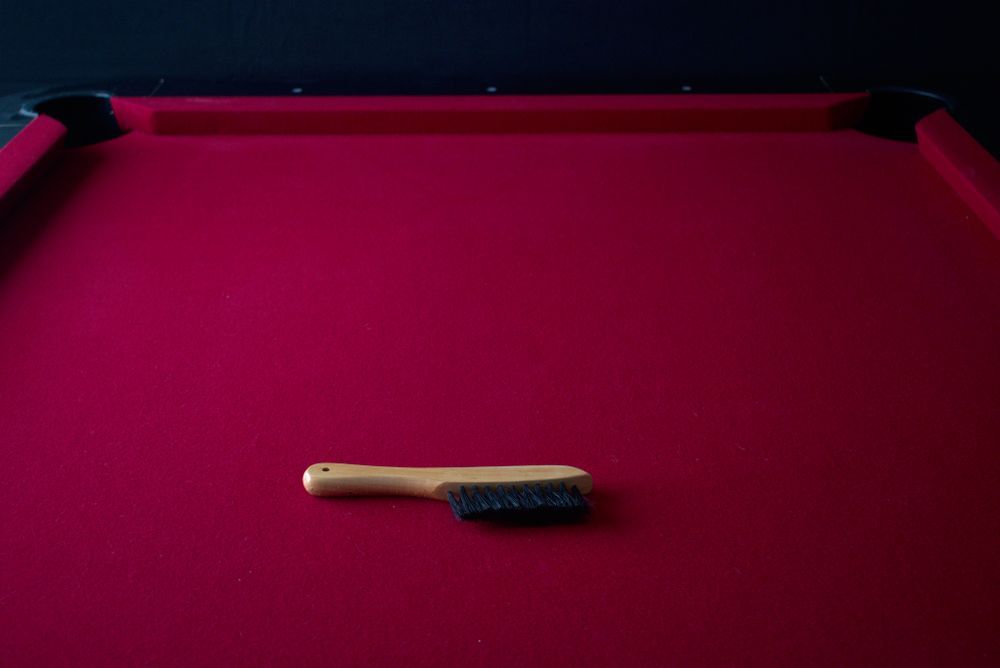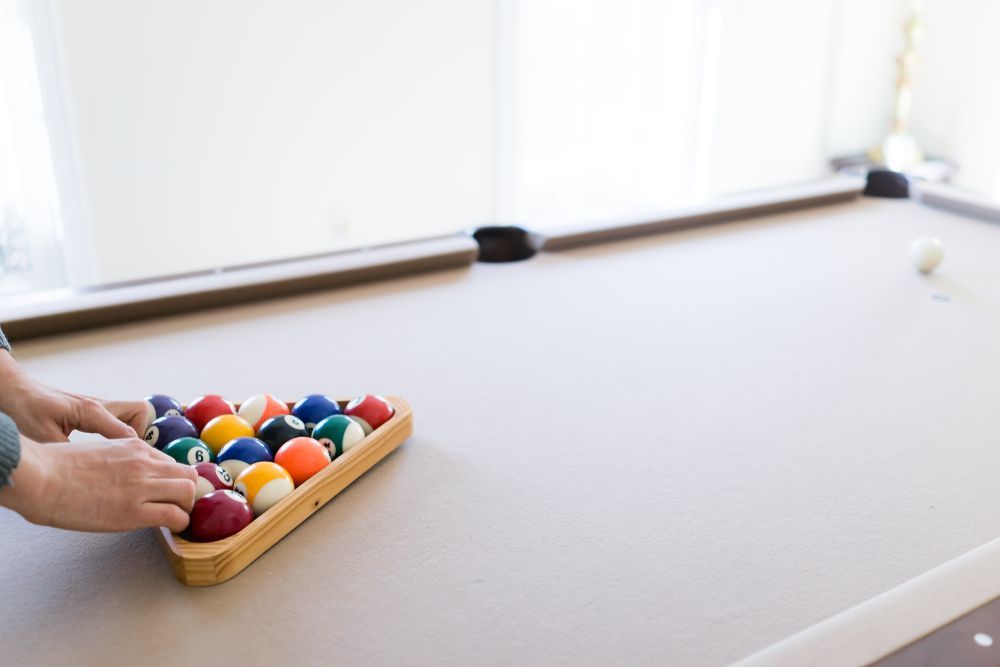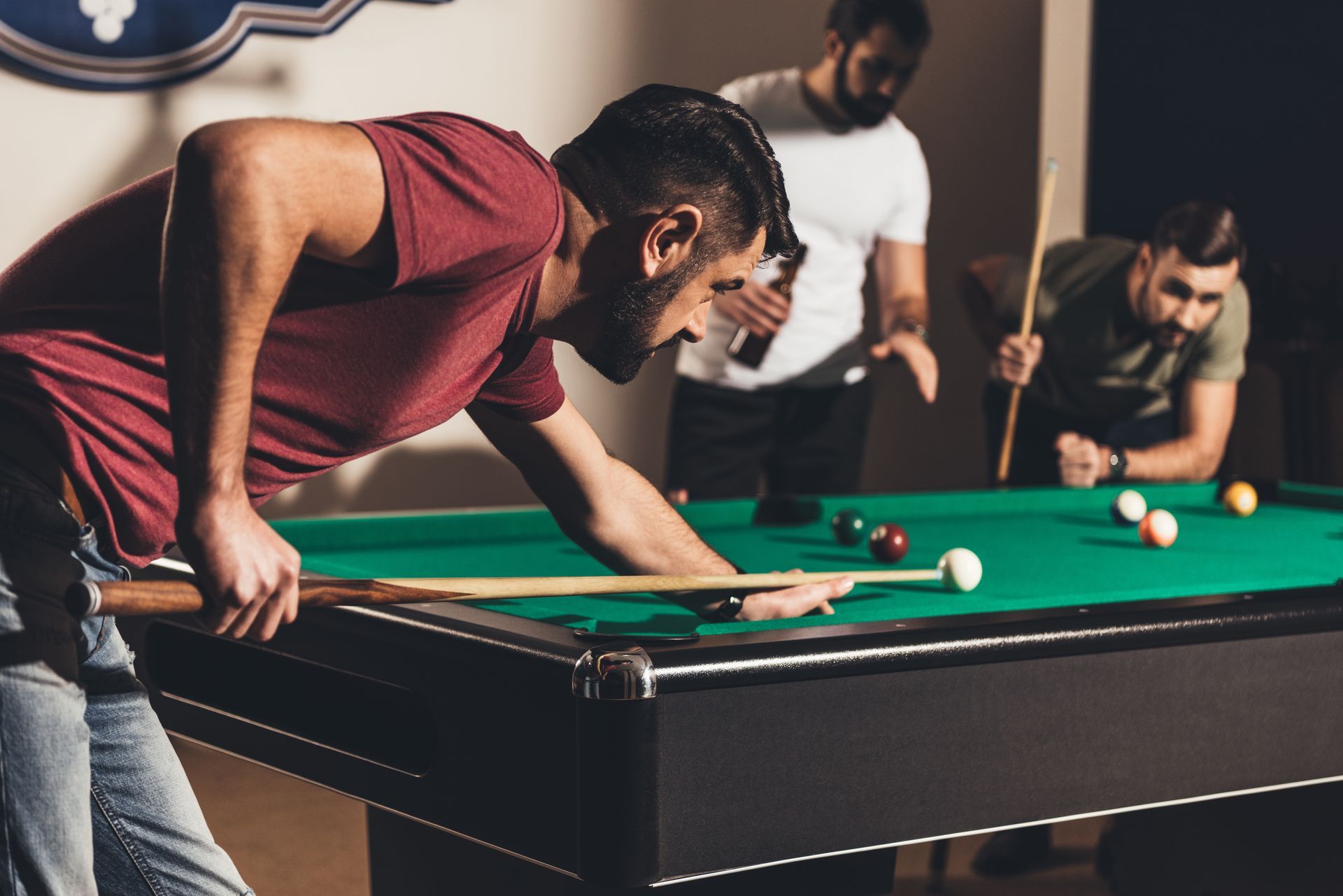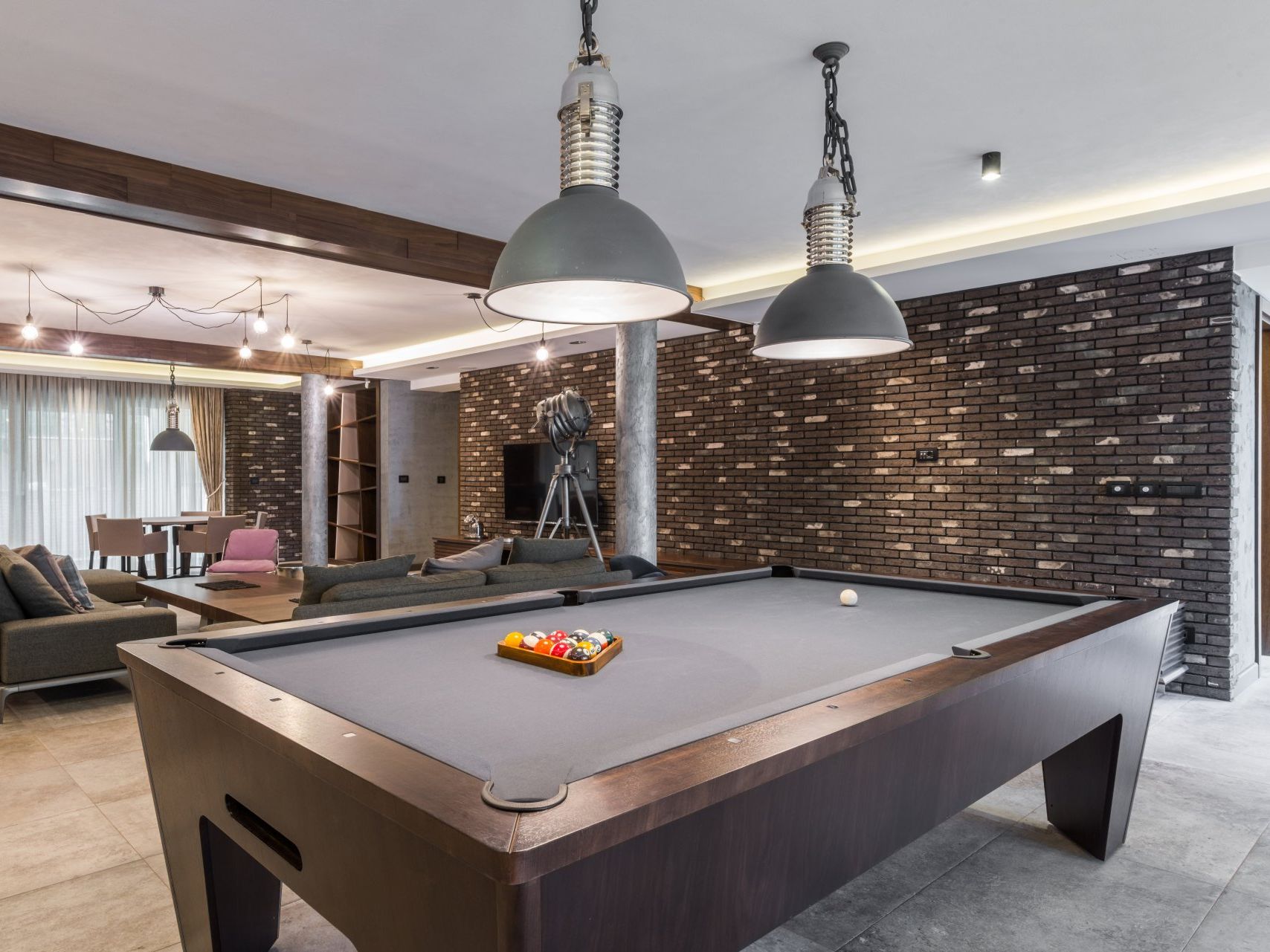Carom Billiards: Tips, Tricks, and Rules
At Corner Pocket, we're your go-to destination for all things pool tables and billiards. Before diving into the intricacies of the game, it's crucial to understand the basics and the essential equipment needed. We provide expert insights into carom billiards, from understanding different types of caroms to scoring systems and advanced techniques.
What is Carom Billiards?
Carom billiards, also known as French billiards, is a cue sport played on a pool table without pockets. Unlike other cue sports such as pool or snooker, carom billiards focuses on making specific point-scoring shots by striking both the opponent's cue ball and the object ball with your cue ball.
Understanding the Basics
Carom billiards is a game deeply rooted in precision, strategy, and finesse. Before delving into advanced techniques and strategies, it's essential to grasp the fundamental aspects of the game.
Equipment Needed for Carom
Carom billiards requires minimal equipment compared to other cue sports. The essential equipment includes:
Carom Billiards Table
The carom billiards table is typically larger than a pool table but lacks pockets. It has markings to indicate specific areas for shots. The playing surface is made of a smooth material to ensure consistent ball movement. Additionally, the table's rails are designed to facilitate precise rebound angles, enhancing gameplay dynamics.
Cue Sticks
Players use cue sticks to strike the cue ball. Unlike pool cues, carom billiards cues have a smaller tip diameter for precise control. The weight and balance of the cue stick are crucial for accuracy and consistency in shots. Additionally, cue sticks may feature intricate designs or ergonomic grips to accommodate player preferences and enhance handling.
Billiard Balls
Carom billiards uses three balls: two cue balls (one for each player) and one red object ball. The cue balls are typically white, while the object ball is red. These balls are designed to roll smoothly on the table surface without bouncing excessively. Additionally, the balls may undergo periodic maintenance, such as cleaning and polishing, to maintain optimal performance and durability.

Setting Up the Game
Before starting a game of carom billiards, players must properly set up the table:
Positioning of Balls
The red object ball is placed at the center of the table, while the two cue balls are positioned at the opposite ends. Proper positioning ensures equal opportunities for players to score and prevents any unfair advantages. Additionally, precise ball placement enhances the integrity of gameplay and minimizes discrepancies in shot execution.
Determining Player Order
Players can determine the order of play through various methods, such as lagging or flipping a coin. The player who wins the lag or coin toss gets to choose whether to break first or let the opponent start. Establishing a fair player order sets the tone for the game and promotes sportsmanship among participants.
How to Play Carom Billiards
Mastering the art of carom billiards requires a combination of skill, technique, and strategic thinking. Understanding the basic gameplay mechanics is essential for beginners and experienced players alike.
Objective of the Game
In carom billiards, the primary objective is to score points by making specific carom shots. A player earns points by striking both cue balls and the object ball in a single stroke.
Movement and Shot Selection
Executing precise shots and controlling the movement of the cue balls are fundamental skills in carom billiards. Different shot techniques and strategies can be employed to achieve desired outcomes.
Basic Strokes
Players execute various strokes, including follow shots, draw shots, and stun shots, to control the movement of the cue balls. Each stroke requires a combination of proper cue ball positioning and striking technique. Additionally, players may incorporate variations in stroke speed and intensity to achieve desired ball trajectories.
Types of Caroms
Carom billiards offers a variety of shot types, each requiring precision and strategic planning. Understanding these shot variations enhances a player's versatility and scoring potential on the table.
Simple Carom
The simplest form of carom involves striking the cue ball to make contact with both the opponent's cue ball and the object ball in a single stroke. This basic carom shot is foundational to the game and serves as the building block for more complex maneuvers.
Angle Carom
Angle caroms, also known as "kisses," involve striking the cue ball in such a way that it contacts one of the opponent's balls before rebounding to make contact with the object ball. This shot requires precise positioning and careful consideration of rebound angles to achieve successful caroms.
Three-Cushion Carom
Considered one of the most challenging carom shots, the three-cushion carom requires the cue ball to contact at least three cushions before making contact with both the opponent's cue ball and the object ball. This shot demands advanced skill in cue ball control and precise calculation of rebound angles.
Follow and Draw Shots
Follow and draw shots involve manipulating the cue ball's forward or backward spin to achieve desired carom trajectories. Follow shots, also known as "top spin," involve striking the cue ball above its center to propel it forward after making contact. Draw shots, or "backspin," involve striking the cue ball below its center to pull it back after impact. These shot variations add complexity to carom strategies and provide options for navigating tight spaces or achieving specific positional advantages.
Massé Shot
The Massé shot is an advanced carom technique where the cue ball is struck with extreme spin, causing it to curve sharply around obstacles or make unexpected rebounds off cushions. Mastering the Massé shot requires precise cue ball control and a deep understanding of spin dynamics, making it a formidable weapon in the arsenal of skilled players.
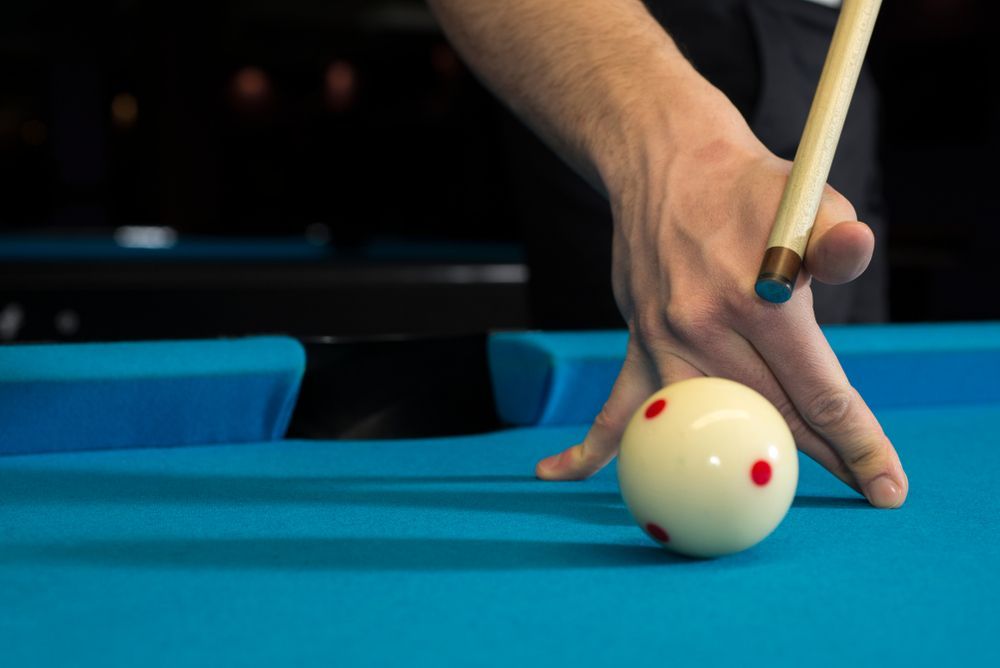
Jump Shot
In certain situations where the cue ball is obstructed by other balls, players may opt for a jump shot to clear obstacles and continue their carom attack. The jump shot involves striking the cue ball with a downward force to lift it off the table briefly, allowing it to clear obstructions before making contact with the opponent's cue ball and the object ball.
Understanding and mastering these various types of carom shots expands a player's repertoire and strategic options on the table. Practicing each shot type under different circumstances enhances a player's ability to adapt to diverse gameplay situations and capitalize on scoring opportunities with precision and finesse.
Scoring System
Understanding the scoring system is crucial for calculating points and developing effective gameplay strategies.
Understanding Points
Points are awarded based on the difficulty of the shot and the number of cushions the cue ball contacts before making contact with the opponent's cue ball and the object ball. Higher-scoring shots require precise positioning and strategic planning. Additionally, players may strategically prioritize certain shot opportunities based on their point values and potential scoring outcomes.
Strategies for High Scores
Players develop strategies to maximize their scoring potential, including controlling the cue ball's trajectory and anticipating rebounds off the cushions. Strategic shot selection and execution are essential for consistently achieving high scores in carom billiards. Additionally, players may employ defensive tactics to limit their opponent's scoring opportunities while positioning themselves for advantageous shots. Strategic adaptability and decision-making are key attributes for competitive success in carom billiards.
Carom Billiards Rules
Familiarizing yourself with the rules of carom billiards is essential for fair play and enjoyable gameplay experiences.
General Rules
Carom billiards follows specific rules to ensure fair play and sportsmanship:
Fouls and Penalties
Players incur fouls for various infractions, such as touching balls with clothing or equipment during a shot. Understanding foul rules helps maintain game integrity and prevents unfair advantages. Additionally, players may develop strategies to capitalize on opponent fouls and gain strategic advantages during gameplay.
Legal Shots
Certain shots are considered legal, such as striking both cue balls with the cue stick's tip. Adhering to legal shot rules ensures that players compete on an even playing field and promotes fair competition. Additionally, players may strategically utilize legal shot opportunities to execute complex carom combinations and gain scoring advantages.
Advanced Techniques
Mastering advanced techniques can give players an edge in competitive gameplay situations.
Bank Shots
Bank shots involve striking the cue ball off one or more cushions before making contact with the object ball. Proper execution of bank shots requires precise angle calculation and cue ball control. Additionally, players may strategically utilize bank shots to navigate challenging positional scenarios and create scoring opportunities. Bank shot proficiency is a hallmark of skilled carom billiards players and contributes to their competitive advantage.
English and Spin
English, also known as spin, allows players to manipulate the cue ball's trajectory by striking it off-center. Understanding how to apply English effectively enhances shot-making versatility and strategic options. Skilled players may employ English to control cue ball spin, alter rebound angles, and execute advanced carom combinations with precision. Mastery of English and spin techniques is essential for elevating gameplay proficiency and outmaneuvering opponents in competitive matches.
Common Mistakes to Avoid
Mastering carom billiards requires practice and dedication, but it's crucial to avoid common mistakes hindering progress. Neglecting table conditions like
levelness and cloth condition affects accuracy. Precise cue ball control prevents missed shots, while strategic shot selection maximizes scoring opportunities. Rushing shots leads to errors, and strategic thinking anticipates opponents' moves. Consistent practice fosters improvement, and fundamental techniques ensure stability. Emotion control prevents impulsive decisions, and adaptability adjusts strategy to game dynamics. By avoiding these pitfalls and focusing on improvement, players can elevate their gameplay and achieve success in carom billiards.

Tips for Improving Your Game
Refining your skills and strategy is essential for advancing your proficiency in carom billiards.
Practicing Precision
Precision is crucial in carom billiards. Practice aiming and controlling the cue ball's path to enhance your accuracy. Consistent practice builds muscle memory and improves shot-making consistency. Additionally, players may incorporate specialized drills and exercises to target specific aspects of precision, such as cue ball positioning and target alignment.
Developing Strategic Thinking
Strategic thinking involves anticipating your opponent's moves and planning your shots accordingly. Develop a strategic mindset to outmaneuver your opponents. Analyzing game situations and adjusting your strategy accordingly can give you a competitive advantage. Additionally, players may study opponent tendencies and gameplay patterns to anticipate their actions and formulate effective counter-strategies. Strategic adaptability and foresight are critical attributes for success in carom billiards competitions.
Repairing Your Pool Table
Maintaining a well-functioning pool table is crucial for optimizing gameplay. Issues such as uneven playing surfaces or damaged cushions can significantly impact your performance. Corner Pocket's
Pool Table Repair offers professional services to address any table-related concerns, ensuring a smooth and consistent playing experience. Our expert technicians can assess and resolve various table issues, including leveling,
re-clothing, and
cushion replacement, to enhance gameplay quality and prolong the table's lifespan.
Contact us today for professional pool table services and experience the difference in your gameplay.
